Hong Kong once had a shark fishery indicating at least they were at one stage abundant, and why perhaps they are now locally extinct.
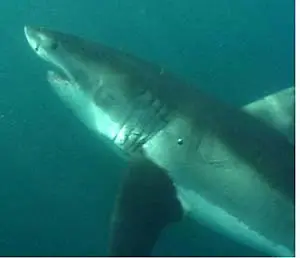 By Charles Frew:
By Charles Frew:
Leading up to the hot summer, Hong Kong prepares itself for the possibility of a migratory shark or sharks making a naturally occurring visit, and a rare one if that, along our small fish size meal coastline.
Our Leisure & Cultural Services Department prepare us for the incredibly low odds of being attacked by a shark or what to do if we even see one (evacuate every beach in a 10 mile radius). The Marine Department spend endless hours chasing up false alarms. And beach goers spend all day scanning the horizon for that black fin slicing through the water.
By the way, did you know that historically Hong Kong once had a shark fishery indicating at least they were at one stage abundant, and why perhaps they are now locally extinct. A bowl of shark fin soup please….
What is it with Hong Kong and sharks?
Most of our public gazetted beaches are protected by shark nets or exclusion nets that are in effect barriers between sharks and the human’s recreational zone. These nets are primarily designed to keep out sharks in the first place. Hong Kong has been implementing the use of shark nets since the early 1990’s when a series of shark attacks resulted in 6 fatalities (see The Sai Kung Shark Attacks – early 90′s, Sai Kung).
. The responsible rogue shark or sharks has never really been identified and a lot of speculation still surrounds these attacks.
Today we can have a fair guess as to what species might have caused the fatalities. Hong Kong has not had a reported attack since 1995. And in 8 years of diving I have certainly never encountered anything capable of eating a toe let alone a leg or arm. But the sharks are out there.
There are probably quite a few shark species that live in these waters for most of the year but due to the inherently poor visibility and intense fishing we rarely get the chance to see one. What we do know is that the sharks appear around the months of May and June and late summer when the sea temperatures increase and decrease respectively. This combined with migrating fish stocks and populations of rays and large fish makes the coastline an opportunity worth investigating. It is this investigation that brings the sharks into the recreational swimming zone.
It appears that as a result of these attacks Hong Kong people have never really come to terms with sharks patrolling our coastal waters, despite the array of nets. Perhaps people feel that government shark nets are not the best line of protection!
This perception may never change unless ‘we’ can convince the younger generation that sharks have important roles in the ocean and should be respected as top predators, efficient culling machines and not demonised as mindless killers.
On average there are 50 shark attack cases globally reported to the Shark Attack Files each year, ranging from nips on the hand to unfortunate fatalities. Of these 50 incidents approximately 15 % are fatal, i.e. roughly 5 people per year are fatally wounded by a shark attack and I must stress that this is a global figure.
Why do sharks come into contact with humans?
The migratory species including the Tiger Shark and Great White Shark are what captures our imagination; the species with big teeth and black eyes. If we want to understand why the sharks come into contact with humans then we need to observe their natural behaviour since our bony bodies are definitely not a preferred choice of prey.
Most shark attacks are prompted by 2 basic situations.
1. Those attacks related to threat and aggression, AND;
2. Those attacks related to feeding in which the shark approaches the victim as a potential meal.
Attacks in the first situation can be subdivided into provoked and unprovoked attacks. Provoked attacks involve the poor judgement of divers and swimmers who might pull the sharks tail or accidentally tread on it whilst playing in shallow waters. Unprovoked attacks are those in which the victim enters into the behavioural sphere of the shark and fails to heed the warning signs. These signs are difficult to view if swimming on the surface but are obvious to divers underwater. For example the shark may swim antagonistically or in the White Shark’s case it might open and close it jaws, known as Repetitive Aerial Gaping; much like a dog gnashing.
Should the warning display be ignored the shark might lash out if the movement by the human is oncoming, sudden or perceived to be threatening. Attacks motivated by feeding are most frequently associated with larger sharks and usually result in fatalities. Sharks are especially active around dusk and dawn when most fish are less aware and doppy but these are only times of major activity. Like most super predators, sharks feed whenever there is an opportunity.
Learning about the shark’s behaviour is where Asiatic Marine comes to the rescue…
We encourage the public to spread awareness of the ecological and economic value of sharks, and their special importance as marine wildlife. One unique method in our multifaceted approach to teaching is organising overseas shark diving expeditions. These are exciting opportunities for anybody to dive with sharks in the open ocean. We cater to researchers who want to tag sharks for scientific studies, film crews making educational documentaries and marine tourism- the public who want to simply see and learn about sharks in their natural habitat.
In conjunction with the above Asiatic Marine is the only company in Hong Kong actively promoting shark conservation and awareness by organising extra curriculum talks to local schools, dive shops and societies alike. I am certain there is nobody that knows what species of sharks reside in Hong Kong or what migratory species pass close or through Hong Kong waters. No extensive study on sharks has ever been conducted in these waters, simply due to the lack of sharks to study. They have all been caught, finned and driven out from our waters.
As a result there is a lack of shark data from this region making any type of future shark management difficult to initiate or carry out as long term project.
So our message is this, yes Hong Kong swimmers should be cautious when sharks are sighted but let the reaction be positive based on fact rather than panic driven based on unfair media portrayal of large killer sharks. We should then seek assistance from experts and find out what species was sighted and if the opportunity exists tag and record environmental field data.
All this information can only increase our knowledge since every year we end up hearing about unconfirmed shark sightings and nothing remotely positive. It would also signify a change on the global stage for Hong Kong, however small the contribution. Let us be seen helping the shark’s cause rather than being the focus of the world for utterly decimating shark populations for the shark fin trade.
I think we would all agree that knowing what the tide is capable of bringing in and the better understanding we have of sharing the same water, then inquisitive sharks on the other side of the net, really are not a bad thing at all.
And for all you ocean users, seeing a shark or being stalked by a shark is an exciting and rare opportunity. Don’t take it personally if it wants to investigate you; just give us a ring and talk about it.
The views expressed in the above article are those of Charles Frew/Asiatic Marine.
If you would like more information on shark talks then please contact Charles Frew: [email protected]
Hong Kong wildlife articles
- Jezebel butterflies seem super abundant in Hong Kong during early 2024
![]() I’ve seen various social media posts and even a couple of media articles about large numbers of Red-base Jezebels Delias pasithoe… Read more: Jezebel butterflies seem super abundant in Hong Kong during early 2024
I’ve seen various social media posts and even a couple of media articles about large numbers of Red-base Jezebels Delias pasithoe… Read more: Jezebel butterflies seem super abundant in Hong Kong during early 2024 - Autumn Skywatching for Birds of Prey and More in Hong Kong
![]() While we’ve known for some years that Grey-faced Buzzard and Chinese Sparrowhawk can pass Hong Kong in good numbers on some… Read more: Autumn Skywatching for Birds of Prey and More in Hong Kong
While we’ve known for some years that Grey-faced Buzzard and Chinese Sparrowhawk can pass Hong Kong in good numbers on some… Read more: Autumn Skywatching for Birds of Prey and More in Hong Kong - Biodiversity of Hong Kong including the Hong Kong Geopark
![]() Introduction: Biodiversity Depleted yet Rich Lying just south of the Tropic of Cancer, and with a sub-tropical climate – summers are… Read more: Biodiversity of Hong Kong including the Hong Kong Geopark
Introduction: Biodiversity Depleted yet Rich Lying just south of the Tropic of Cancer, and with a sub-tropical climate – summers are… Read more: Biodiversity of Hong Kong including the Hong Kong Geopark - Birds of Pui O on Lantau, Hong Kong
![]()
- Film of Mai Po Marshes – Hong Kong’s wetland superstar
![]() Here’s a film I made about Mai Po, using footage James Reynolds and I shot for the reserve, in English, Cantonese… Read more: Film of Mai Po Marshes – Hong Kong’s wetland superstar
Here’s a film I made about Mai Po, using footage James Reynolds and I shot for the reserve, in English, Cantonese… Read more: Film of Mai Po Marshes – Hong Kong’s wetland superstar - Where have all the Hong Kong Barn Swallows gone?
![]() I live on Cheung Chau, a small island in southwest Hong Kong – and became very used to it hosting many… Read more: Where have all the Hong Kong Barn Swallows gone?
I live on Cheung Chau, a small island in southwest Hong Kong – and became very used to it hosting many… Read more: Where have all the Hong Kong Barn Swallows gone? - Birdwatching in Hong Kong gives insights into wonders of nature
![]() While human life has lately been muted in Hong Kong during springtime, local birdlife remains vibrant, offering a chance to enjoy… Read more: Birdwatching in Hong Kong gives insights into wonders of nature
While human life has lately been muted in Hong Kong during springtime, local birdlife remains vibrant, offering a chance to enjoy… Read more: Birdwatching in Hong Kong gives insights into wonders of nature - Watching Hong Kong mammals
![]() With increasing reports of wild boars – including the large male dubbed “Pigzilla” on the Peak, a couple of hikers [March… Read more: Watching Hong Kong mammals
With increasing reports of wild boars – including the large male dubbed “Pigzilla” on the Peak, a couple of hikers [March… Read more: Watching Hong Kong mammals - Birds of Deep Bay including Mai Po photos
![]()
- Birding and Conservation at Fung Lok Wai Fishponds Near Mai Po
![]() Though Mai Po Marshes is at the heart of Hong Kong’s internationally important Deep Bay wetland, there are other important sites… Read more: Birding and Conservation at Fung Lok Wai Fishponds Near Mai Po
Though Mai Po Marshes is at the heart of Hong Kong’s internationally important Deep Bay wetland, there are other important sites… Read more: Birding and Conservation at Fung Lok Wai Fishponds Near Mai Po - Hong Kong’s first Scaly-sided Merganser
![]() From edge of Tai Lam Chung Reservoir in northwest New Territories, Hong Kong on 24 January 2023; trip to see what… Read more: Hong Kong’s first Scaly-sided Merganser
From edge of Tai Lam Chung Reservoir in northwest New Territories, Hong Kong on 24 January 2023; trip to see what… Read more: Hong Kong’s first Scaly-sided Merganser - Rare Turtles, Paradise Fish and Abundant Ants in Hong Kong Countryside
![golden-coin-turtle-kfbg]() Take a hike through the Hong Kong countryside and, chances are, you will enjoy some wonderful scenery – maybe rugged hills… Read more: Rare Turtles, Paradise Fish and Abundant Ants in Hong Kong Countryside
Take a hike through the Hong Kong countryside and, chances are, you will enjoy some wonderful scenery – maybe rugged hills… Read more: Rare Turtles, Paradise Fish and Abundant Ants in Hong Kong Countryside - Hong Kong is Home to a Rich Biodiversity
![taipokau800px]() A condensed story of “wild” Hong Kong, from around 18,000 years ago, at the peak of the last ice age. to the present.
A condensed story of “wild” Hong Kong, from around 18,000 years ago, at the peak of the last ice age. to the present. - Urban Birds in Hong Kong inc Ho Man Tin Hotspot
![]() Including the advent of a new birdwatching hotspot in the city – thanks to habitat, location, and pioneering observations by John Chow.
Including the advent of a new birdwatching hotspot in the city – thanks to habitat, location, and pioneering observations by John Chow. - Seabirds of Hong Kong: Sea Swallows, Pirates, and Ocean Wanderers
![]() Three species of terns nest in Hong Kong; the other seabirds are all visitors to Hong Kong waters, including a smattering of vagrants
Three species of terns nest in Hong Kong; the other seabirds are all visitors to Hong Kong waters, including a smattering of vagrants - Birds of Shui Hau on Lantau Island, Hong Kong
![]() Shui Hau on Lantau, Hong Kong, can be rewarding for birdlife – including a good variety of shorebirds in spring.
Shui Hau on Lantau, Hong Kong, can be rewarding for birdlife – including a good variety of shorebirds in spring. - Birds of Lion Head Mountain and Ngong Ping on Lantau, Hong Kong
![]() In spring 2022, thanks to birding naturalist Paul Aston, I helped discover that the hills near Ngong Ping on Lantau island… Read more: Birds of Lion Head Mountain and Ngong Ping on Lantau, Hong Kong
In spring 2022, thanks to birding naturalist Paul Aston, I helped discover that the hills near Ngong Ping on Lantau island… Read more: Birds of Lion Head Mountain and Ngong Ping on Lantau, Hong Kong - Spring Migration of Grey-faced Buzzards and Chinese Sparrowhawks in Hong Kong
![]() Hong Kong is usually a poor place for seeing migrating birds of prey; on many days, you might be hard-pressed to… Read more: Spring Migration of Grey-faced Buzzards and Chinese Sparrowhawks in Hong Kong
Hong Kong is usually a poor place for seeing migrating birds of prey; on many days, you might be hard-pressed to… Read more: Spring Migration of Grey-faced Buzzards and Chinese Sparrowhawks in Hong Kong - Threats and changes to Hong Kong insect populations
![]() While there’s no apocalypse now in Hong Kong’s insect world, threats and changes are cause for concern – including for us humans
While there’s no apocalypse now in Hong Kong’s insect world, threats and changes are cause for concern – including for us humans - Birdwatching Close to Home – in Your Hong Kong Local Patch
![]() Many birdwatchers have a place or two near home which they watch regularly – a place known in birdwatching terms as a “local patch”.
Many birdwatchers have a place or two near home which they watch regularly – a place known in birdwatching terms as a “local patch”. - Era of the Pig – Boom Times for Hong Kong’s Wild Boar
![]() Several factors have led to a marked increase in the numbers of wild boars seen on the city fringes, and even in some urban areas.
Several factors have led to a marked increase in the numbers of wild boars seen on the city fringes, and even in some urban areas. - Spectacular Swallowtails, Flying Tigers and Archdukes Arriving – Hong Kong Butterflies
![]() Hong Kong is home to 23 species of swallowtails, among an impressive tally of around 245 butterfly species, and watching and photographing these and other eyecatching butterflies can readily enhance outdoor outings.
Hong Kong is home to 23 species of swallowtails, among an impressive tally of around 245 butterfly species, and watching and photographing these and other eyecatching butterflies can readily enhance outdoor outings. - Hong Kong’s Enigmatic Porpoises: Finless, and Almost Friendless
![]() Growing to just 1.8 metres in length, finless porpoises are shy, and hard to see even in their home ranges within southern Hong Kong waters.
Growing to just 1.8 metres in length, finless porpoises are shy, and hard to see even in their home ranges within southern Hong Kong waters. - Endangered Hong Kong Birds, on Flights to Oblivion
![]() Like canaries in a coal mine, endangered species are signs of danger facing planet earth, our life support system Perhaps for… Read more: Endangered Hong Kong Birds, on Flights to Oblivion
Like canaries in a coal mine, endangered species are signs of danger facing planet earth, our life support system Perhaps for… Read more: Endangered Hong Kong Birds, on Flights to Oblivion - Death in Stanley – Hong Kong’s Last South China Tiger
![]() Hong Kong’s last tiger was shot in Stanley, in 1942; prior to which this now extinct sub-species had become an occasional visitor to the territory.
Hong Kong’s last tiger was shot in Stanley, in 1942; prior to which this now extinct sub-species had become an occasional visitor to the territory. - Hong Kong’s Magnificent Six Wildlife Species – Ambassadors for the Wild
![]() Set on the coast of sub-tropical south China, Hong Kong is home to a wealth of wildlife, which is all the… Read more: Hong Kong’s Magnificent Six Wildlife Species – Ambassadors for the Wild
Set on the coast of sub-tropical south China, Hong Kong is home to a wealth of wildlife, which is all the… Read more: Hong Kong’s Magnificent Six Wildlife Species – Ambassadors for the Wild - HK Wildlife Photos by Martin Williams
![changeable lizard front on crop2012Jun23_5455800px]()
- Red Tides n Sea Sparkle n the Mad Megalopolis
![]() The end of November 2014 saw areas of inshore waters across Hong Kong and east Shenzhen turn improbably colourful thanks to… Read more: Red Tides n Sea Sparkle n the Mad Megalopolis
The end of November 2014 saw areas of inshore waters across Hong Kong and east Shenzhen turn improbably colourful thanks to… Read more: Red Tides n Sea Sparkle n the Mad Megalopolis - Birding in Hong Kong’s Deep Bay During Spring
![nam sang wai reflections]()
Deep Bay in northwest Hong Kong is a wetland of international importance, a magnet for migratory waterbirds.
- Birdwatching in Hong Kong is a great pastime
![black-winged-stilts-long-valley2011Oct11800px]() You don’t need much equipment to start birdwatching. A pair of binoculars and a field guide will get you started on… Read more: Birdwatching in Hong Kong is a great pastime
You don’t need much equipment to start birdwatching. A pair of binoculars and a field guide will get you started on… Read more: Birdwatching in Hong Kong is a great pastime - Hong Kong’s Mysterious Migratory Butterflies
![blue-spotted-crow-flight2011Oct30800px]() On 31 December 2011, researchers trapping butterflies at Deep Water Bay on Hong Kong Island found a Chestnut Tiger with writing on… Read more: Hong Kong’s Mysterious Migratory Butterflies
On 31 December 2011, researchers trapping butterflies at Deep Water Bay on Hong Kong Island found a Chestnut Tiger with writing on… Read more: Hong Kong’s Mysterious Migratory Butterflies - Deadliest Hong Kong Animals
![chinese-cobra]() A quick look at animals with venom, killer teeth and blades. Table of Contents Giant Centipede Blue-ringed Octopus Bamboo Snake Domestic… Read more: Deadliest Hong Kong Animals
A quick look at animals with venom, killer teeth and blades. Table of Contents Giant Centipede Blue-ringed Octopus Bamboo Snake Domestic… Read more: Deadliest Hong Kong Animals - Watching and Photographing Black Kites in Hong Kong
![]()
![black kite]() Black Kites are among the territory’s most familiar birds.
Black Kites are among the territory’s most familiar birds. - Mai Po Marshes Nature Reserve – including bird flocks and global rarities
![mp2_egret_shorebirds]()
![mai po]() At Mai Po Marshes Nature Reserve you can enjoy impressive wildlife spectacles.
At Mai Po Marshes Nature Reserve you can enjoy impressive wildlife spectacles. - Dangerous Snakes in Hong KongA review of the DANGEROUS SNAKES in Hong Kong.
- Lantau feral cattle and water buffalo
![shap-long-buffalo2012Jan01_9523800px]() They might seem odd “wildlife”, yet Lantau’s cattle and water buffalo now roam free, and are part of the ecosystem.
They might seem odd “wildlife”, yet Lantau’s cattle and water buffalo now roam free, and are part of the ecosystem. - Rat Snakes wrestlingOn Cheung Chau one afternoon, saw two big Rat Snakes wrestling. Also known as a “dance”, this is combat between two… Read more: Rat Snakes wrestling
- Top Ten Hong Kong birds
![]() Here’s a definitive list of the top ten Hong Kong birds.(Well, ok, this is subjective; but ten top species for sure.)… Read more: Top Ten Hong Kong birds
Here’s a definitive list of the top ten Hong Kong birds.(Well, ok, this is subjective; but ten top species for sure.)… Read more: Top Ten Hong Kong birds - No Bird Flu Just Enjoyable Visit to Mai Po
![]()
Despite all the brouhaha, there is no H5N1 at Mai Po.
- Beginning birdwatching in Hong Kong
![]() Hong Kong is an excellent place for birdwatching. Here, you can find global rarities that are tough to see elsewhere, encounter… Read more: Beginning birdwatching in Hong Kong
Hong Kong is an excellent place for birdwatching. Here, you can find global rarities that are tough to see elsewhere, encounter… Read more: Beginning birdwatching in Hong Kong - Hong Kong’s Regenerating Forests and Forest Wildlife
![]() Though there are places where wildlife is on the rebound, none is any more than a shadow of Hong Kong’s forests past.
Though there are places where wildlife is on the rebound, none is any more than a shadow of Hong Kong’s forests past. - Hong Kong Sharks
![shark]() Hong Kong once had a shark fishery indicating at least they were at one stage abundant, and why perhaps they are now locally extinct.
Hong Kong once had a shark fishery indicating at least they were at one stage abundant, and why perhaps they are now locally extinct. - Mai Po birding, Hong Kong
![black-faced-spoonbill2009Apr17]()
![spoonbill]() Mai Po Marshes Nature Reserve is a key part of the internationally important Deep Bay wetland
Mai Po Marshes Nature Reserve is a key part of the internationally important Deep Bay wetland - Hong Kong birding sites inc Long Valley and Tai Po Kau
![blue_tailed_bee_eater_4]()
![bee-eater]() There are many good birdwatching locations throughout Hong Kong.
There are many good birdwatching locations throughout Hong Kong.

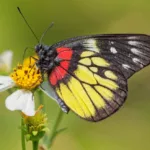
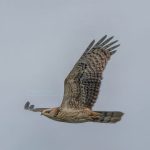
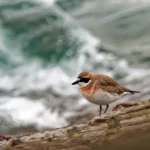
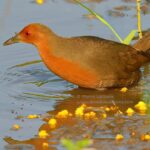

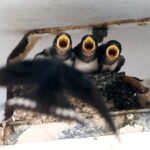
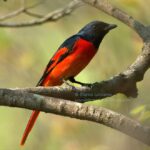
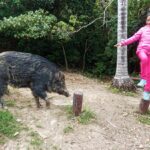
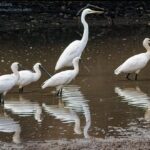
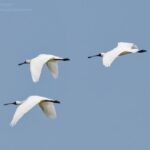
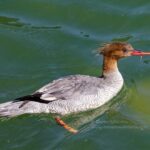
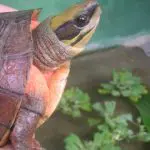

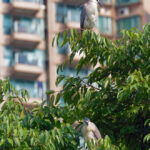
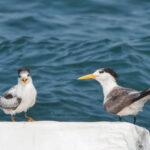
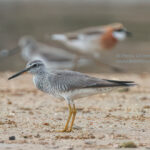
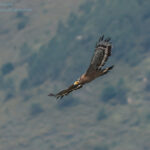
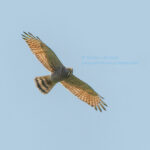
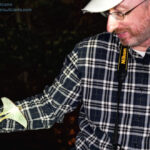
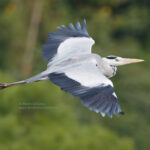

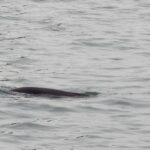
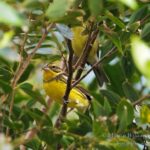









 Black Kites are among the territory’s most familiar birds.
Black Kites are among the territory’s most familiar birds.
 At Mai Po Marshes Nature Reserve you can enjoy impressive wildlife spectacles.
At Mai Po Marshes Nature Reserve you can enjoy impressive wildlife spectacles.
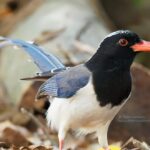

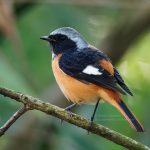
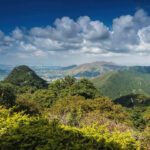


 Mai Po Marshes Nature Reserve is a key part of the internationally important Deep Bay wetland
Mai Po Marshes Nature Reserve is a key part of the internationally important Deep Bay wetland
 There are many good birdwatching locations throughout Hong Kong.
There are many good birdwatching locations throughout Hong Kong.
Population
But what is the population